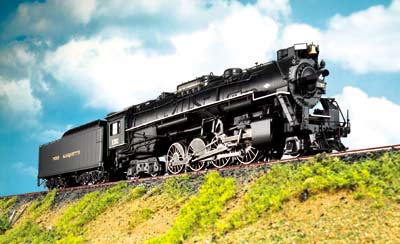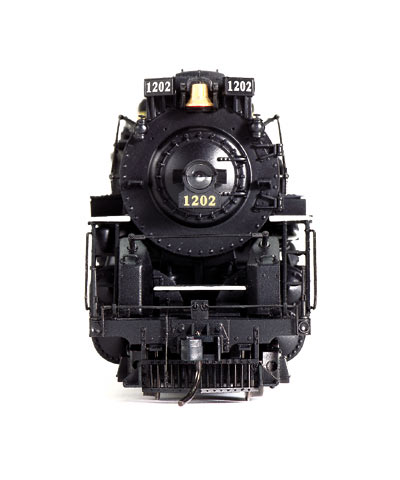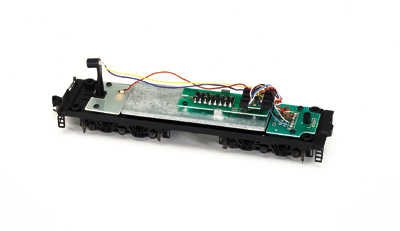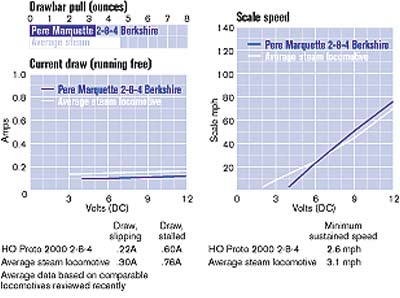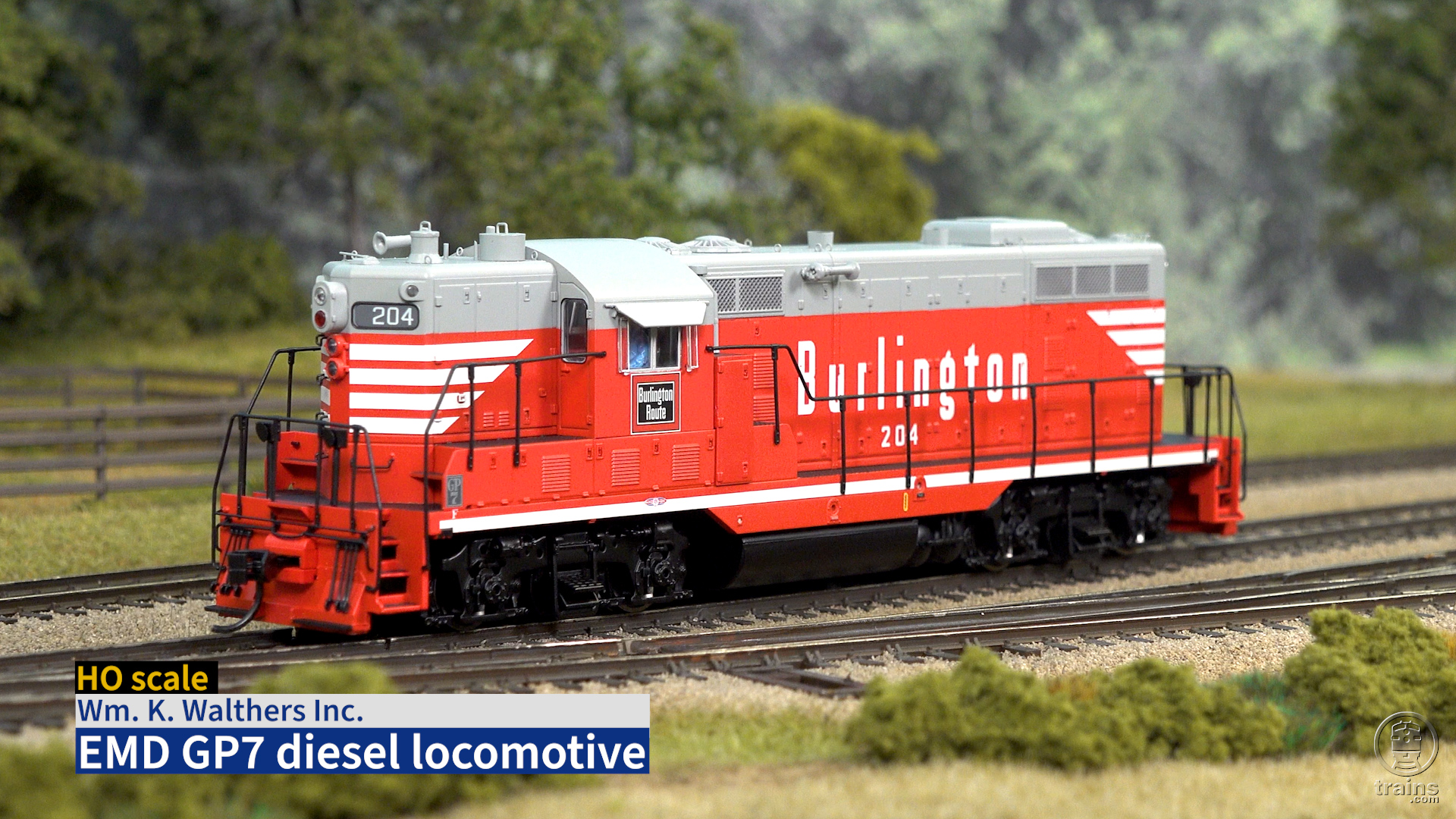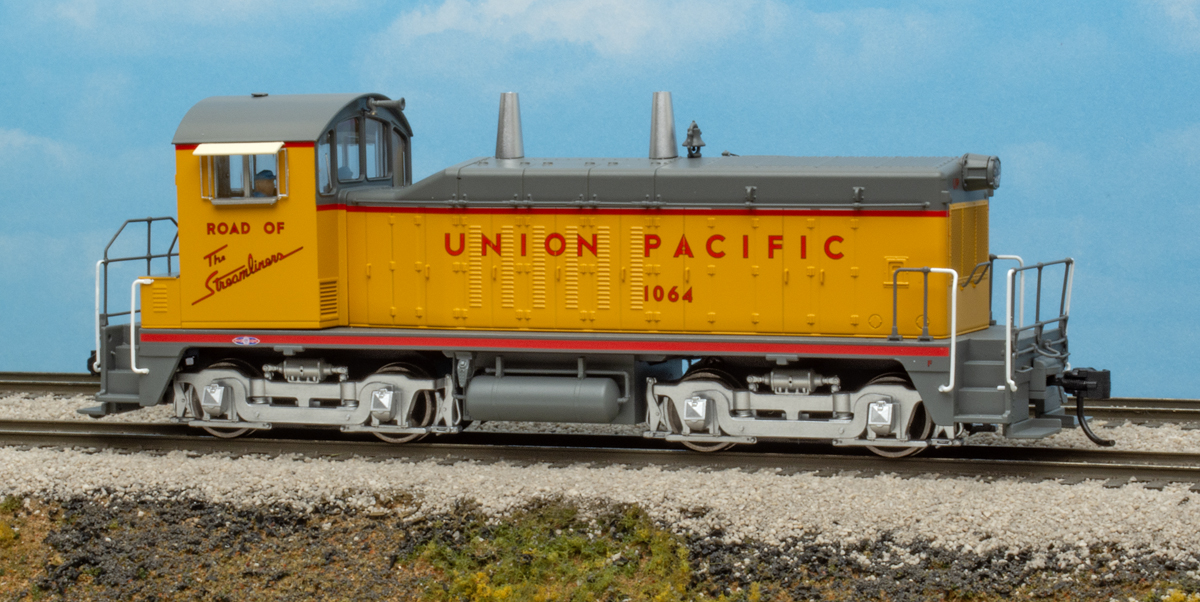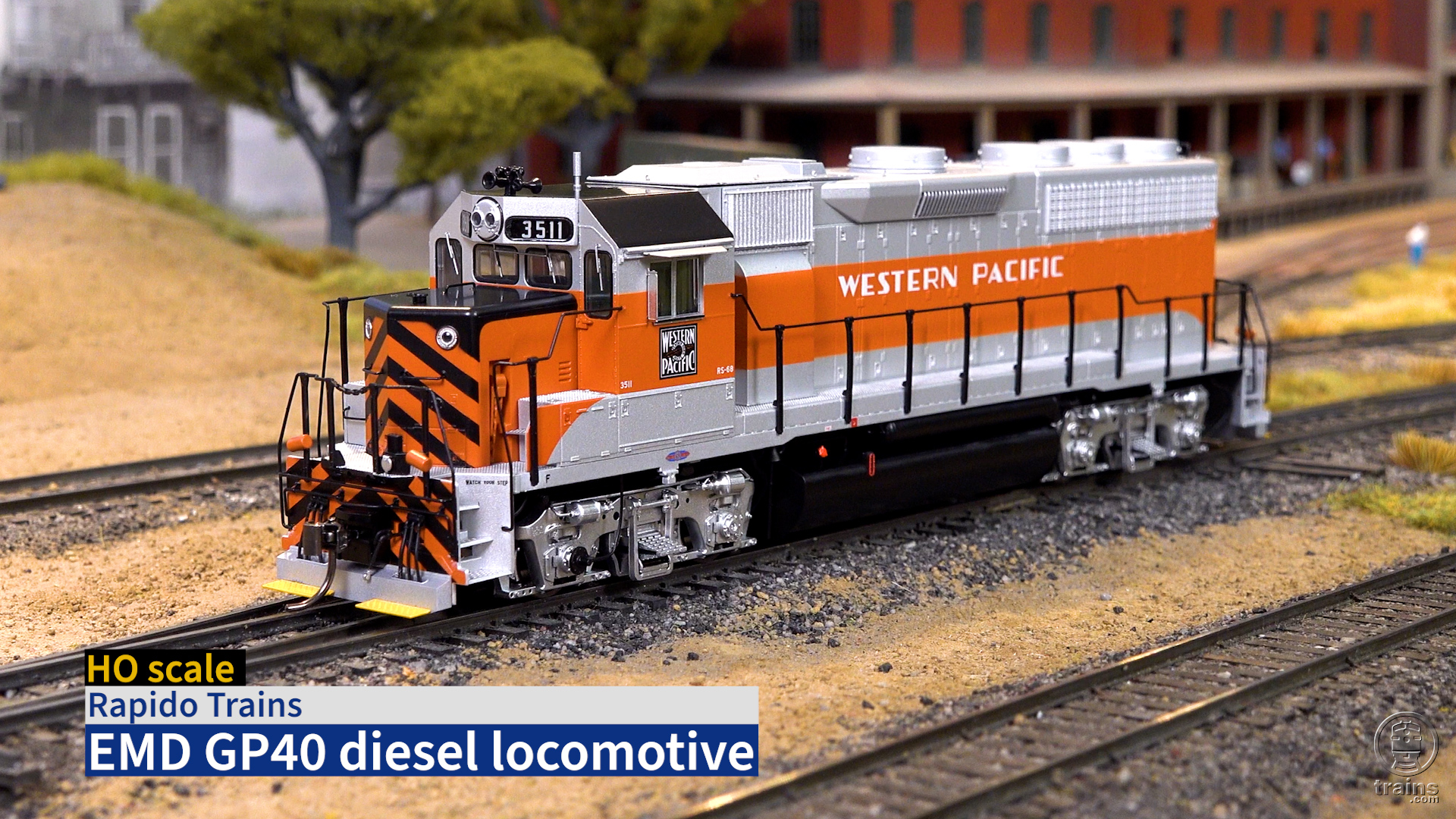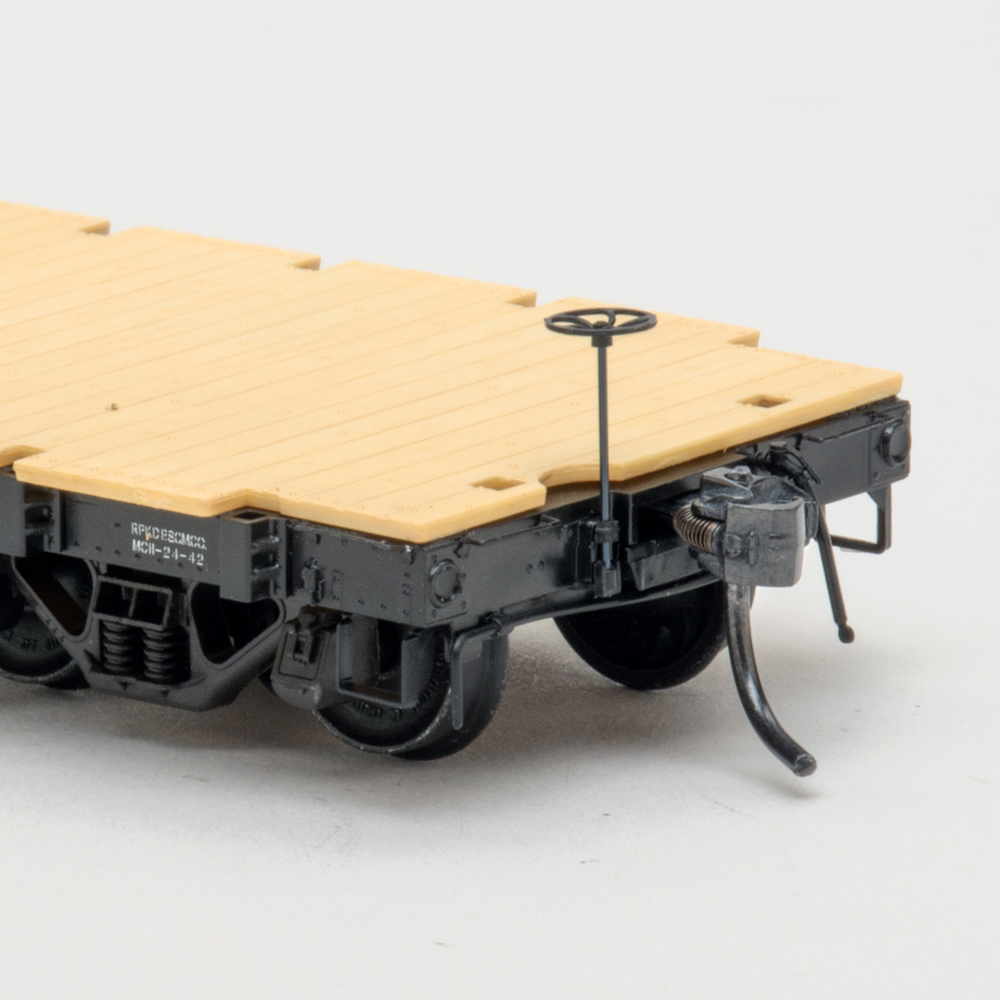This beautifully detailed Pere Marquette RR 2-8-4 is one of a series of HO scale Berkshires being added to Life-Like’s Proto 2000 “Steam Heritage Collection.” It’s a medium-sized, accurate model with smooth performance to go with its classic appearance. It looks great operating on 24″- and larger-radius curves.
Background
Each model includes a 12-page booklet written by Model Railroader’s contributing editor Tony Koester. It explains the history of these locomotives, beginning with the Lima Locomotive Works’ introduction of its “Super-Power” steam locomotives in 1925.
The “Berkshire” name comes from the first 2-8-4 that was tested in New York’s Berkshire Mountains. This Pere Marquette model represents one of a family of later 2-8-4s built for railroads controlled by the Van Sweringen brothers of Cleveland that also included the Chesapeake & Ohio; Erie; New York, Chicago & St. Louis (Nickel Plate Road); and Wheeling & Lake Erie. Mechanical engineers from these railroads formed the Advisory Mechanical Committee which designed some of America’s most successful steam locomotives, including nearly 300 2-8-4s built by both Alco and Lima.
Life-Like’s initial release includes Berkshires with specific detailing for three railroads. Our sample is a replica of the Pere Marquette RR class N Berkshires built by Lima in 1937. The others are C&O’s class K-4 “Kanawha” built by Alco in 1943 and 1944, and the Nickel Plate class S-1 from Lima in 1942 and 1943. Future Proto 2000 releases will be detailed for other classes of these locomotives.
Since this Pere Marquette Berkshire was a “carbon copy” of the NKP Berkshire, it matches drawing no. 43 of the Nickel Plate locomotive in the Model Railroader Cyclopedia – Volume 1: Steam Locomotives (Kalmbach Publishing Co.).
Numerous versions
An eight-page instruction booklet includes exploded isometric drawings that help explain the design work Life-Like has incorporated to accommodate 17 different options required for the various prototypes:
- three combinations of sandboxes and steam domes
- two sand pipe arrangements
- optional firebox and smokebox exterior jacketing
- two styles of cab windows
- two styles of cab roof hatches
- solid- or roller-bearing trucks
- Franklin or Alco power- reverse units
- optional air tanks
- two bell brackets
- two class-light positions
- two headlight types with optional number plates and either centered or low mounting positions
- three pilot styles
- three tender sizes
Close inspection will provide a better appreciation of the engine’s fine detailing, which includes more than 120 hand-applied parts. Among them you’ll find a brass bell, free-standing piping, and metal handrails. The cab has a detailed backhead and seats for the engineer and fireman.
Mechanism details The innovative mechanism is concealed and inaccessible inside the boiler that’s permanently assembled around it. (Life-Like does not recommend disassembling this model.) The firebox is filled with weight to help balance the engine; the motor is directly over the drivers with flywheels on each end.
The illustrations in the instruction booklet show that the motor and flywheels are surrounded by cast-metal weights. The latter are electrically isolated, with the motor clamped inside like an N scale diesel mechanism. A worm at the front drives a gear train that transfers power down to the lead driving axle. Then the side rods transmit the motion to the remaining drivers. Both end driver sets are rigidly mounted while the two middle sets are sprung.
This arrangement allows for some appropriate open space between the frame and the boiler above the drivers. However, inappropriate daylight also shows between the trailing truck and firebox. This situation comes from shortening the frame and leveling the ash pans to provide clearance for tight model curves.
The metal side rods are flat, but the valve gear is embossed with a nice relief, and the eccentric cranks are properly oriented on both sides. All of the engine’s drivers and all the tender wheels pick up current for smooth operation.
The wheels are all metal and they match the National Model Railroad Association’s RP-25 contour. They all matched the NMRA standards gauge; however, the scale 68″ drivers appear to be just the wheel centers as the tires are omitted. This makes the treads very thin and the counterweights incorrectly extend to the edges of the wheels.
All of the drivers and valve gear are chemically darkened, but the color is an odd silvery gray. A little weathering with some grimy black will improve the appearance here.
The large coal tender on the PM engine is the same size as the NKP version, which carried 22,000 gallons of water and 22 tons of coal. The tender trucks have the correct scale 33″ wheels and metal safety chains at each corner. Two printed circuit boards are concealed inside the tender to operate the reversing constant headlight and backup light. An eight-pin Digital Command Control socket is wired into one of them. Purchasers can easily disconnect and discard the diode lighting circuit and plug in a decoder. The instructions explain that, but the low-voltage bulbs must be replaced with higher-voltage lamps for DCC operation.
Like previous Proto 2000 models, the constant-lighting circuit in the tender absorbs the first 2.1 volts, so the motor actually starts at 1.5 volts. The model’s overall speed range is excellent and very close to that of the prototype. Its current requirements are very low.
The Berkshire’s drawbar pull is equivalent to about 47 free-rolling cars on straight and level track. It does seem to slip easily, so its pulling capacity will probably improve as the blackening is worn off the drivers.
Operating magnetic knuckle couplers came mounted at the proper height on both the engine and tender. It’s great to have working couplers on both ends of a freight locomotive for double-heading or switching cars. Overall, I’m pleased with the excellent work that’s gone into these beautiful new Van Sweringen Berkshires. Their smooth performance and chunky good looks make a great case for backdating my layout to the Berkshire era!
Price: $365
Manufacturer:
Life-Like Products Inc.
1600 Union Ave.
Baltimore, MD 21211-1998
www.lifelikeproducts.com
Description:
Plastic and metal ready-to-run
steam locomotive and tender
Features:
Blackened nickel-silver RP25
wheels, all correctly gauged
Digital Command Control (DCC) decoder socket in tender
Directional constant lighting
Drawbar pull: 3.36 ounces
(47 cars on straight and level track)
Dual flywheel drive
Engine weight: 16 ounces,
(21 ounces with tender)
Five-pole skew-wound motor
Magnetic knuckle couplers
mounted at the proper height
on engine pilot and tender
Minimum radius: 18″
Specific prototype details
20-wheel electrical pickup
Wire handrails
Road Names:
(two numbers each)
Pere Marquette
Chesapeake & Ohio
Nickel Plate Road
Undecorated





